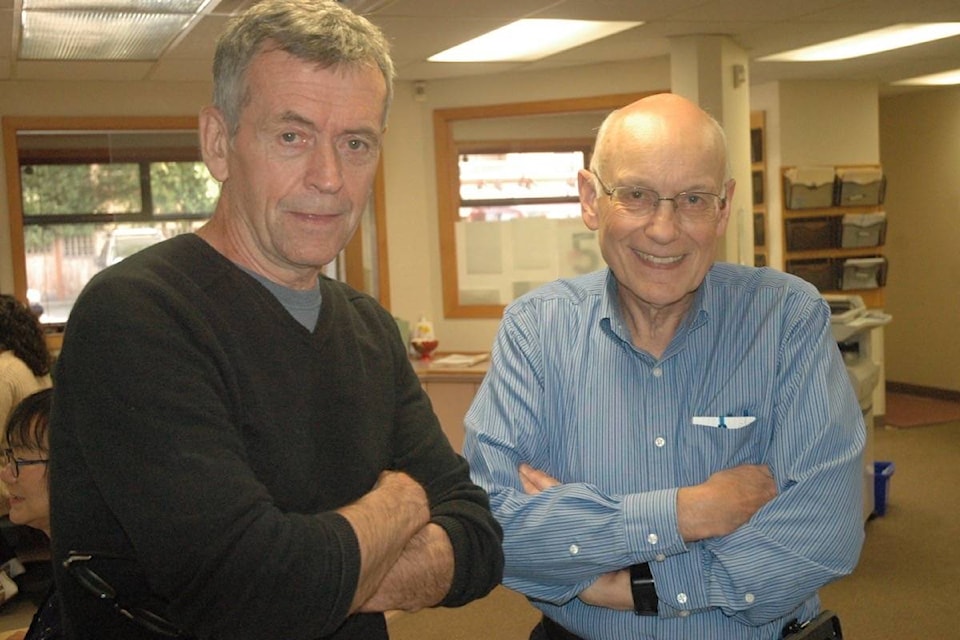Doctor shortages aren’t new to the Cowichan Valley or in other areas of the province.
But the growing extent of the problem has many physicians, both family doctors and specialists, in the Valley fearing that local medical services could soon be severely impacted.
The Valley Medical Clinic, which usually has six family doctors, has been trying to recruit new blood into the clinic for years.
But the clinic has had no luck and, with the impending departure of Dr. Neil Heard, the remaining doctors recently sent a letter to Heard’s patients.
The letter informed them that the clinic will no longer be able to provide them with services as of July 1 and that they should find themselves another family doctor as soon as possible.
Dr. Michelle Ismail, one of the remaining doctors at the clinic, said the clinic’s physicians already have as many patients as they can handle.
“We’ve been actively recruiting for years to replace doctors who are either retiring of leaving to do other things, but this is the first time we have really struggled,” Ismail said.
“There’s just not that many doctors to pick from any more. Some that do come aren’t interested in putting down roots here and move on, and others retire soon after.”
Ismail said one solution she’d like to see is to make it mandatory for newly graduated doctors to spend the first year or two of their careers in a rural community.
“Many new doctors just don’t know the advantages of living and working in a small place,” she said.
“They see that many family doctor practices are already overloaded with patients, so a lot of them are choosing to work in walk-in clinics in larger centres to get a feel for the career before they move on.”
Dr. Donald MacGregor, an ophthalmologist in Duncan, is also facing similar challenges.
MacGregor, who works with the Duncan Eye Specialists clinic on Brae Road, is 70 and is hoping to retire by the end of the year, and another elderly doctor at the clinic is also expected to retire soon.
Dr. Stan Polack, an ophthalmologist with the same clinic, is 72 and is also planning to retire this year.
They have working with Island Health to find a replacement for three years with no success, but their waiting room is constantly filled and there’s no hope of finding replacements any time soon.
MacGregor said the situation has become a “real source of frustration.”
“If this situation is not solved, our patients’ family doctors will have to refer them to an ophthalmologist elsewhere because the local resources won’t be adequate without any new doctors to replace us,” he said.
“We want to do the right thing, but we’re getting fed up with the whole process. I’ve been here since 1989 and I’ve never seen the situation so severe. The Valley is getting bigger and busier but we’re not keeping up with the medical resources that are needed here.”
MacGregor said some ophthalmologists had expressed an interest in coming to the Valley, but the restricted and limited operating times available at the Cowichan District Hospital for medical procedures keep them away.
He said there was some discussions with Island Health about setting up a free-standing surgical suite in the Valley to deal with the extra demand for procedures, but the idea never took root.
“We’ve been making it very clear to Island Health that people in the Valley will become disgruntled and unhappy if no solutions to this problem are found,” MacGregor said.”
Dr. David Robertson, executive medical director for the Valley with Island Health, acknowledged there are growing problems with having enough general practitioners and medical specialists to meet the local demand.
He said pediatrics is another area that is seeing a recruitment problem in Cowichan.
Robertson said there used to be five pediatricians in the Valley, but there currently are just two.
“It’s creating real problems with the delivery of babies at Cowichan District Hospital and on some days recently, we’ve had to divert patients to Victoria or Nanaimo,” he said.
“We’re working with the province and local pediatricians to deal with the issue, and more recruitment of new pediatricians may be necessary.”
As for ophthalmologists in the Valley, Robertson said the situation is not new.
He said there were five ophthalmologists in the Valley, but there have been a number of retirements recently.
“But we still have two ophthalmologists doing surgeries there and they are keeping up so far,” Robertson said.
“Actually, the Valley is probably the best served part of the Island when it comes to ophthalmologists. We probably do need a third ophthalmologist but that’s not clear at the moment. If surgical wait times were rising, there’s no question we’d get involved with advertising and doing what we can to help bring in more ophthalmologists. We’re monitoring it carefully.”
Robertson said the Valley is actually well served as well with the number of general practitioners that are here, but he acknowledged that more are retiring and there’s seems to be more trouble finding new ones.
He said financial and other incentives are sometimes used to draw new doctors to some rural areas of B.C., but they are usually in much more remote areas than the Valley.
Robertson said the future of doctors’ practices in the province is changing, with many choosing to set up in community health centres where physical therapists, occupational therapists and other medical specialists also practice instead of working individually as in the past.
“New doctors tend to want to work in these group practices, so we might want to consider changing the delivery of medicine as we continue to look to recruit new doctors to the area,” he said.
